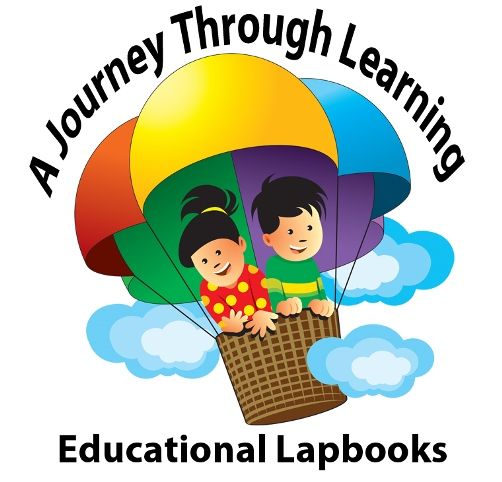A Journey Through Learning Lapbooks are an enjoyable introduction to many topics. If you have crafty, hands on type kids and your family appreciates unit studies, like we do, they will love the variety of components in these lapbook units. I received a download version of The Greatest Inventors. I chose that study because the punks are very interested in learning about inventors. The best part was that some of the inventors covered in this study are people they had never heard of and I may not have even thought to mention to them under other circumstances.

The 66 page The Greatest Inventors lapbook is for children in grades 2-8. A study guide is included and provides all of the information needed to complete the lessons. It's available both as a PDF ($8) or a printed color copy mailed to you ($18).
The unit requires basic lapbooking supplies; mainly file folders, glue, scissors, writing utensils, and a stapler. Of course, for the PDF version, you'll need a computer and printer.
Once I downloaded the lapbook, all I needed to do to get started was prepare the file folders and print the components. Inventors is a rather large lapbook set, requiring *three* file folders. For small lapbooks, I generally don't do the refolding of the file folders and just rearrange a couple of components. This time, though, not refolding the file folders would have meant making myself more work. I don't like more work. It was easy to teach the bigger punks how to make the 3 folder booklets. Even Merrick (K/1st) learned to fold the folders and glue them together to make this giant lapbook.
All of the instructions for assembling the file folders and making, folding, and placing the minibooks are easy to follow. Once the folders were prepared and the components were printed, the punks got to do their favorite part. They each created and drew an invention of their own to add to the covers.
The included study guide has a page or two of information to help the students complete the components that follow it. While I think it is "enough" information for the early elementary grades, I thought the older punks needed supplemental information. One of the pages included at the end of the lapbook is a booklist for recording other books that are being read to complement the study guide. We have loads of books that could be connected to The Greatest Inventors lapbook, so that was simple enough and didn't even require a trip to the library.
Along with that reading record, I found some notebooking and enrichment pages, a book report template, narration pages for the littles, and an outline form. We didn't use the outline form at all yet, but I can see it is going to be invaluable in helping the boys learn how to organize information they want to write about. I love it!
There are 21 minibook components in this lapbooking unit, seven for each folder. The inventors run the gamut - across the centuries (1400s-1900s) and from the obvious choices (Ben Franklin and Leonardo DaVinci) to lesser known, but important inventors through history that I might not have even thought of on my own (George Eastman and John Deere). George Stephenson was probably the favorite in this house!
All the inventors featured in this study are
- Johannes Gutenberg
- Benjamin Franklin
- John Deere
- Wilber and Orville Wright
- Guglielmo Marconi
- George Eastman
- Louis Braille
- Eli Whitney
- Leonardo daVinci
- Robert Fulton
- Thomas Jefferson
- Galileo Galilei
- George Stephenson
- Thomas Edison
- Jonas Salk
- George Washington Carver
- Henry Ford
- Alexander Graham Bell
The minibooks can be a simple, single fold, a tri-fold, or accordion fold. Some are pages of various widths or heights that can be stacked and act as tabs for the recorded information.
I like how easy, A Journey Through Learning has made placing the minibooks in the file folders. There is a handy guide in the upper corner of each component page which shows placement and explains exactly how to assemble the minibook and what to record in the spaces of each book. Either there are questions to answer, something to draw, or something to restate in your own words.
 |
| Oops! That one page did confuse me for a minute. Ben Franklin had that placement in folder #1! |
This video that explains What is a Lapbook. In it, they walk you step by step through building the Light lapbook. Check it out.
This is a great little inventor study! The rest of The Crew reviewed this lapbook as well as a few others. Are you and your family taking part in Classical Conversations? How about Apologia's science curriculum? A Journey Through Learning has lapbooks to accompany your studies. But the great thing about their lapbooks is this - you don't even *have* to be studying something already. You can choose from, literally, hundreds of titles that can stand on their own! AJTL has single folder ("express") lapbooks to as many as three folders, like our Greatest Inventors lapbook. Click the banner below to read about some of the other options.
Find A Journey Through Learning on social media.
Twitter @AJTL_lapbooks
Google+







1 comment:
We used these when my kids were younger. It was much more fun than textbooks.
Post a Comment